
Population “Factfulness” – where Hans Rosling goes wrong
Factfulness, the new book by the late Hans Rosling and his family is rightly receiving a great deal of attention.
At Population Matters we commend Hans Rosling as a brilliant communicator and a person dedicated to improving the lives of people across the world. We also strongly share his belief that understanding facts and data is essential to solving the challenges we face.

In that spirit, we offer the following facts, which run counter to Prof Rosling’s popular but shakily founded position that population isn’t a problem and future population growth will effectively sort itself out. We believe that he was only able to maintain that position through neglecting environmental problems, over-simplifying population data and placing his faith in demographic theories that haven’t been proved and technological solutions that haven’t yet been invented.
At Population Matters, we maintain that making a better life for everyone – a goal we share with the Roslings – requires concerted action on population, not assurances that it isn’t really a problem.
Fact One: There could be more than 11 billion people in 2100
[See note below regarding current projections] The UN offers a range of projections for population growth, of which 11.2bn people in 2100 is one possibility. The UN’s 95% certainty range for 2100 shows a maximum of nearly 13bn and a minimum of under 10bn – a range of nearly 40% of the current global population (7.6bn). The top projection shows almost no decline in rate of growth by the end of the century.
Further, according to the 2017 World Population Prospects report, “for countries with high levels of fertility, there is significant uncertainty in projections of future trends, even within the 15-year horizon of the 2030 Agenda for Sustainable Development, and more so for the projections to 2100 [emphasis added].”
NOTE: This article was written in 2018. In its 2021 projections, the UN’s medium projection for 2100 was amended downwards to 10.4bn, which is approximately 30% more people than are alive today. The 95% certainty interval ranged up to 12.4bn.
Fact Two: Very small differences in family size make major differences to future population
According to the UN, variations in global population size caused by even small changes in the size of families are very significant. For example, If there is just half-a-child per family more than the UN’s medium projection expects, our population in 2100 could be more than double what it is now – if half-a-child less, it would be smaller than it is now.
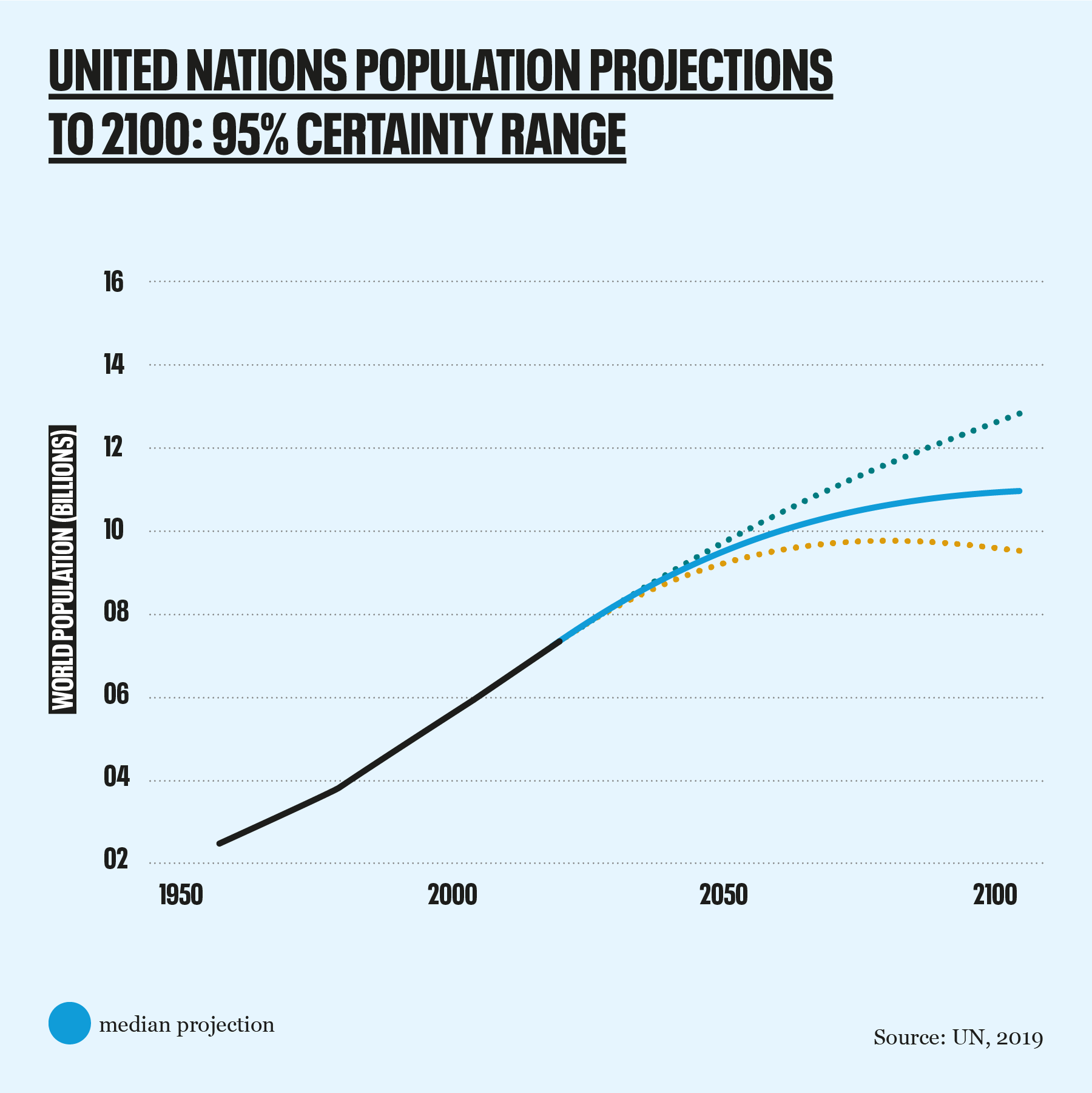
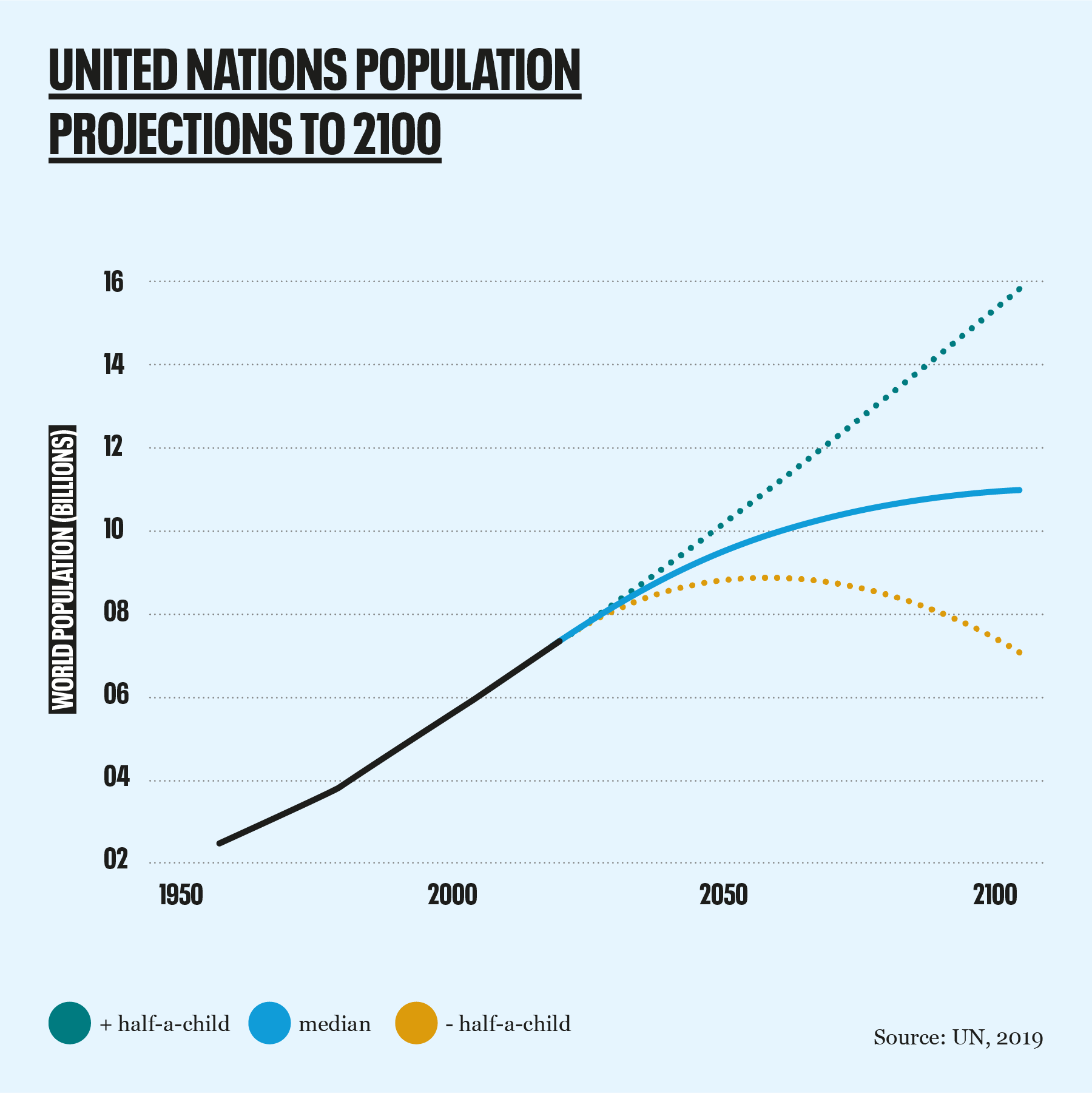
Fact Three: Without continued and concerted effort, even achieving the current projection will not be possible
The UN’s medium projection is not what will happen if we let things carry on as they are. The UN’s 2017 World Population Prospects report states:
“To achieve the substantial reductions in fertility projected in the medium variant, it will be essential to support continued improvements in access to reproductive health care services, including family planning, especially in the least developed countries, with a focus on enabling women and couples to achieve their desired family size.” [Emphasis added.]
200 million women worldwide continue to have an unmet need for contraception, mostly in Least Developed Countries.
Fact Four: Global fertility won’t fall if governments work to make it go up
A number of governments are now encouraging or incentivising larger families. These include Iran, South Korea and China.
Japan’s Prime Minister, Shinzo Abe, however, has said he has “absolutely no worries” about Japan’s low birth rate and high ratio of older people, describing it as “an incentive to increase productivity”.
[Since this post was written, we have published a detailed report on coercive pronatal policies. For more information see our Gilead Watch page.]
Fact Five: Education and economic development are not enough
Hans Rosling is absolutely right that women’s empowerment, education, lifting people out of poverty and contraception are essential to bringing down family size and reducing population growth – but of those, what actually does the practical work is access to and provision of high quality, effective family planning services. Countries which have introduced active family planning programmes which provide services, education about contraception and actively encourage smaller family sizes see greater falls in fertility than the average for developing countries.
Source: O’Sullivan, J (2016) Journal of Population and Sustainability
Growing evidence also suggests that Prof Rosling’s reliance on the theory of “Demographic Transition” – in which countries moving out of poverty experience lower fertility rates – is misplaced. While the pattern was strong in the history of many currently developed countries as they moved out of poverty, fertility rates are falling so slowly and haltingly in a number of Least Developed Countries that demographic transition is barely happening at all.
Fact Six: Human population correlates to major environmental problems
The Roslings’ conclusion that population is not a problem can only be reached by neglecting resource and environmental concerns.
Population – and associated consumption, especially in the developed world – is a driver of multiple environmental problems now: further population growth will exacerbate the problems.
For an introduction to the environmental issues, please see our Welcome to the Anthropocene page and follw the relevant links for more detail.
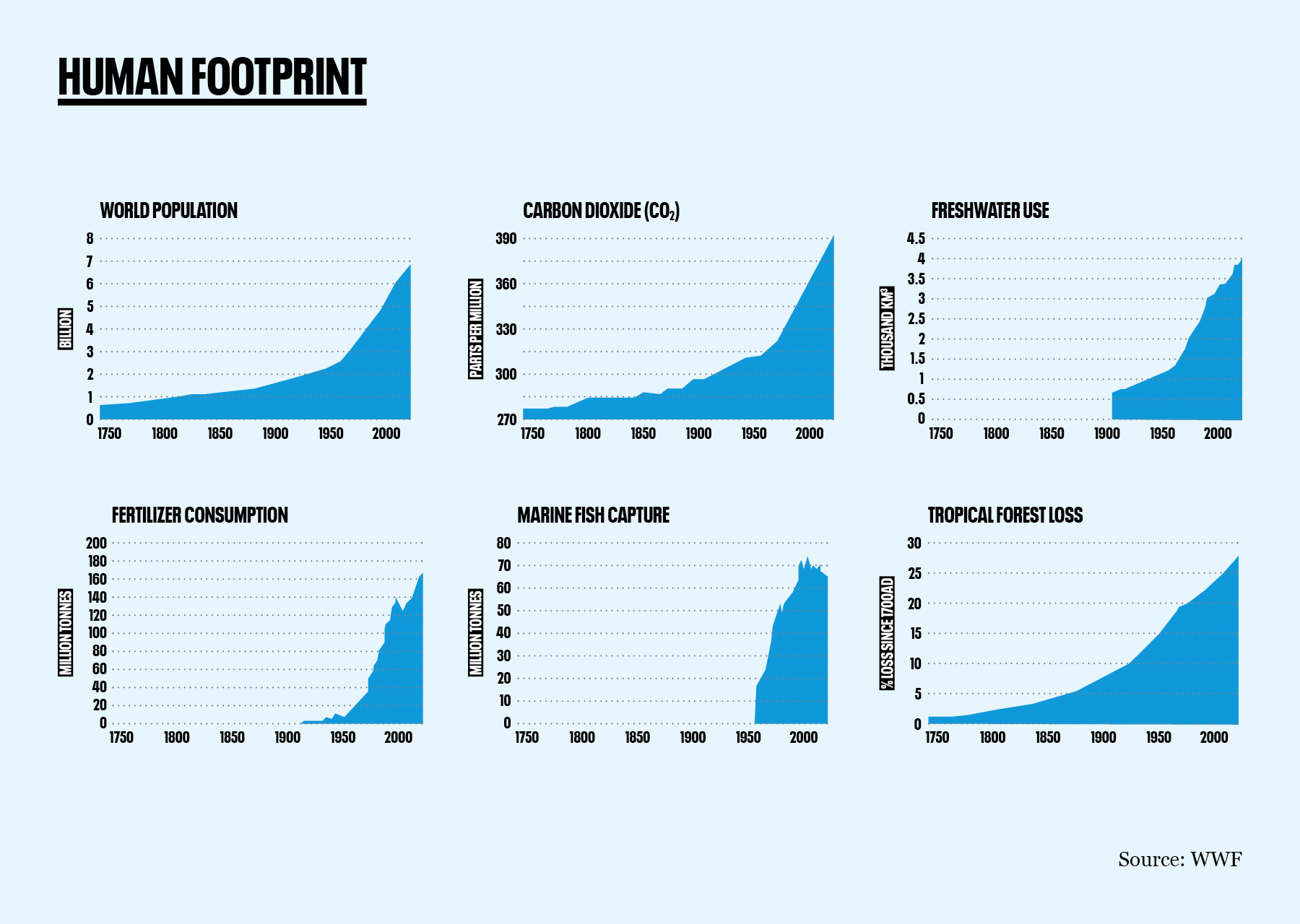
Fact Seven: The current human population is demanding more resources than the planet can provide
According to the Global Footprint Network, we are currently already using resources almost twice as fast as they can regenerate. If we stay on current population and consumption trajectories, we’d need three planets by 2050 to meet our demand without destroying nature. To make our current population size sustainable, the average consumption level would need to drastically decrease. It is clear that those consuming the most can and should reduce their consumption, but hundreds of millions in low-income countries are increasing their consumption as they rightly escape poverty.
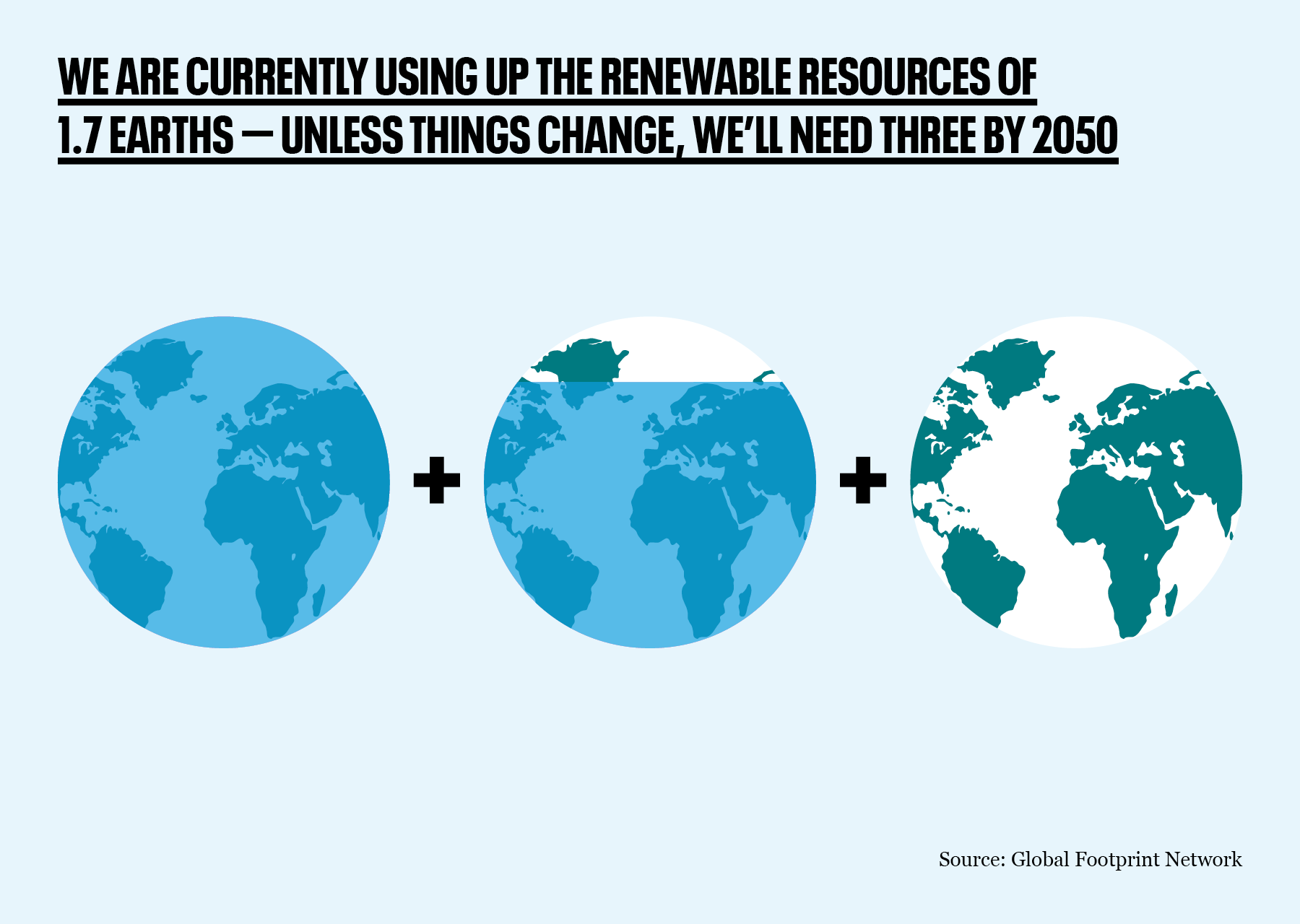
Fact Eight: More people, more climate change emissions
People emit carbon. Gross disparities exist in the CO2 emissions of citizens of different countries but high population can drive high emissions even where per capita output is low. (Indian per capita emissions are a fraction of those of the USA but it joins the US as one of the world’s top three carbon emitters.)
[Since this page was written, we have produced a details blog on the relationship between climate change, carbon inequality and population, here.]
A major international study by Project Drawdown in 2017 identified practical policy measures that could be taken to minimise greenhouse gas emissions as quickly as possible. Project Drawdown analysed more than eighty policy options and identified family planning and educating girls as among the top 10 workable solutions to combat climate change available today. Project Drawdown calculated that together, these would reduce more CO2 emissions by 2050 than onshore and offshore wind power combined.
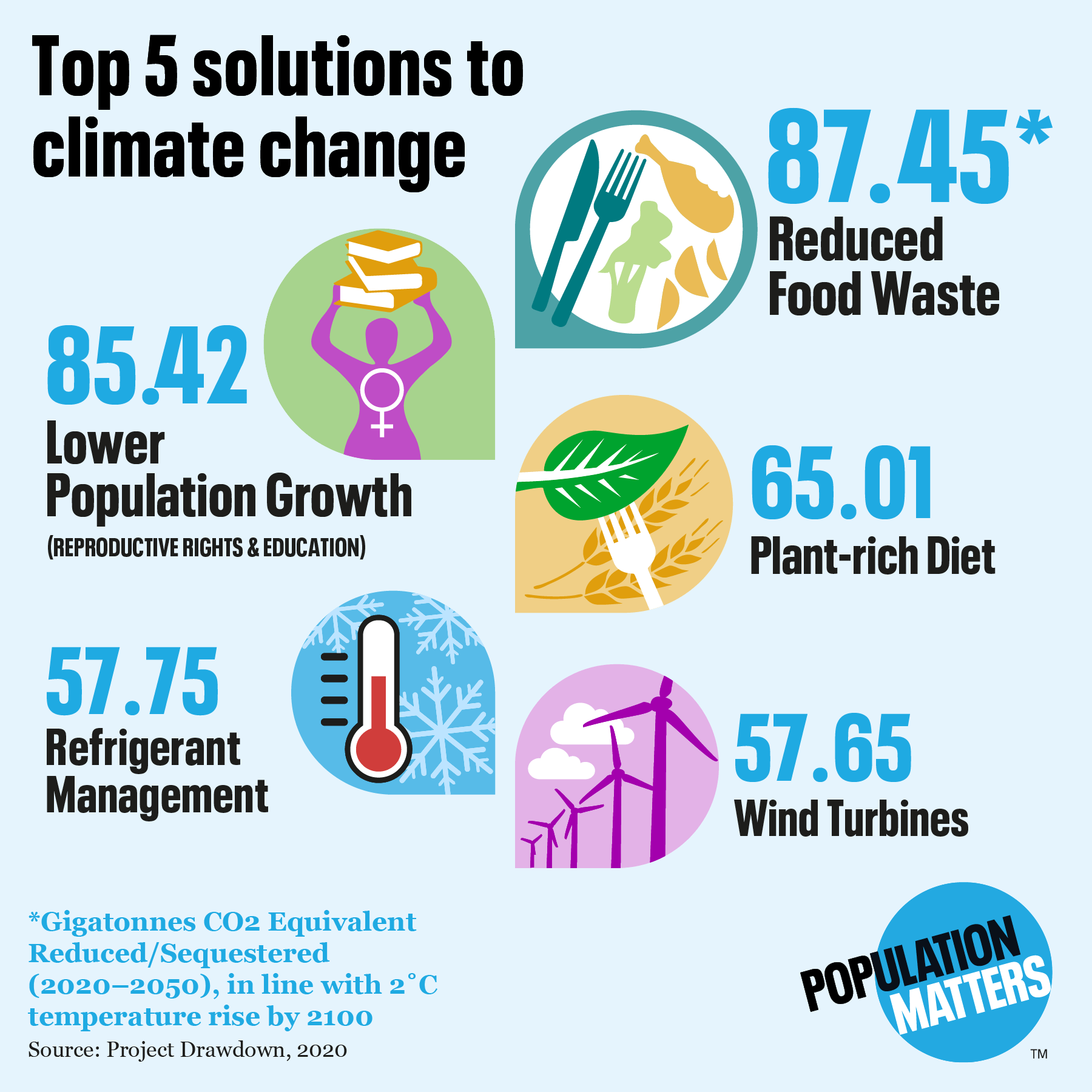
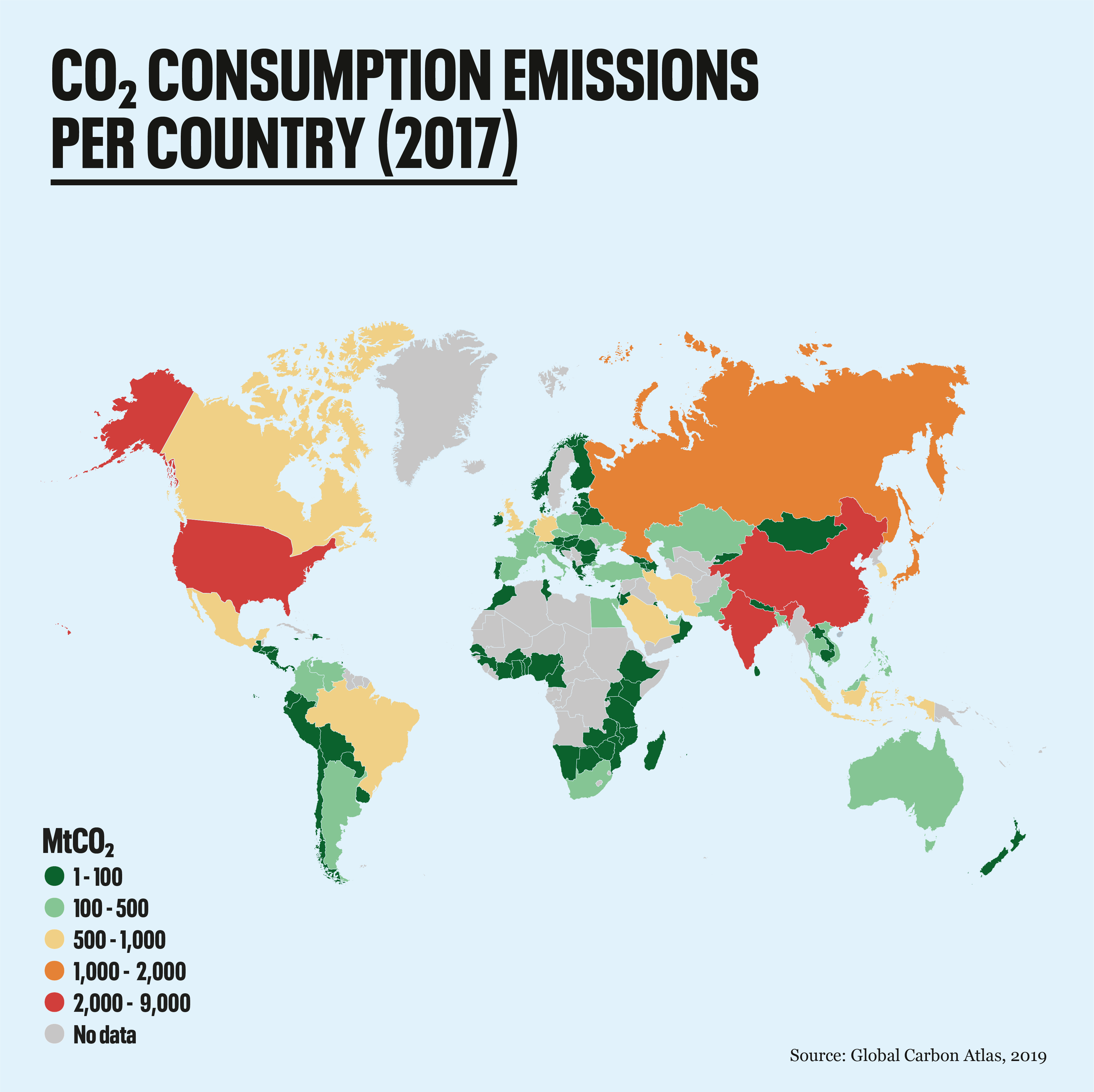
Another study published in 2017 by the Universities of Lund and British Columbia argued that if the emissions of future descendants are taken into account, the single most effective long-term measure an individual in the developed world can take to cut their carbon emissions is to have one fewer child.
Their enormous positive effect is a result of their role in reducing family size and population growth.
Fact Nine: More people, less wildlife
As human population has increased, the number of both animals and animal species has shrunk dramatically.
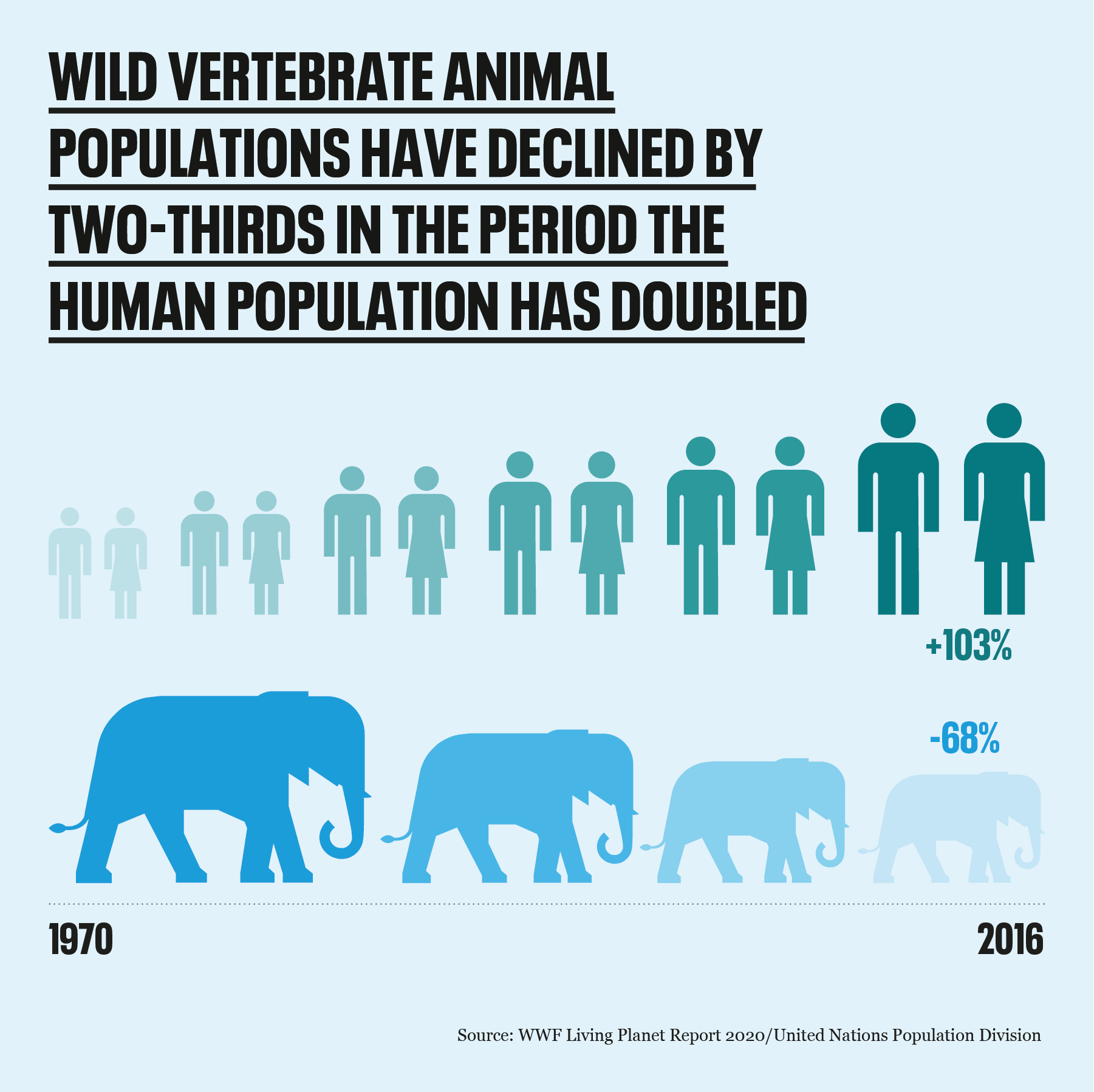
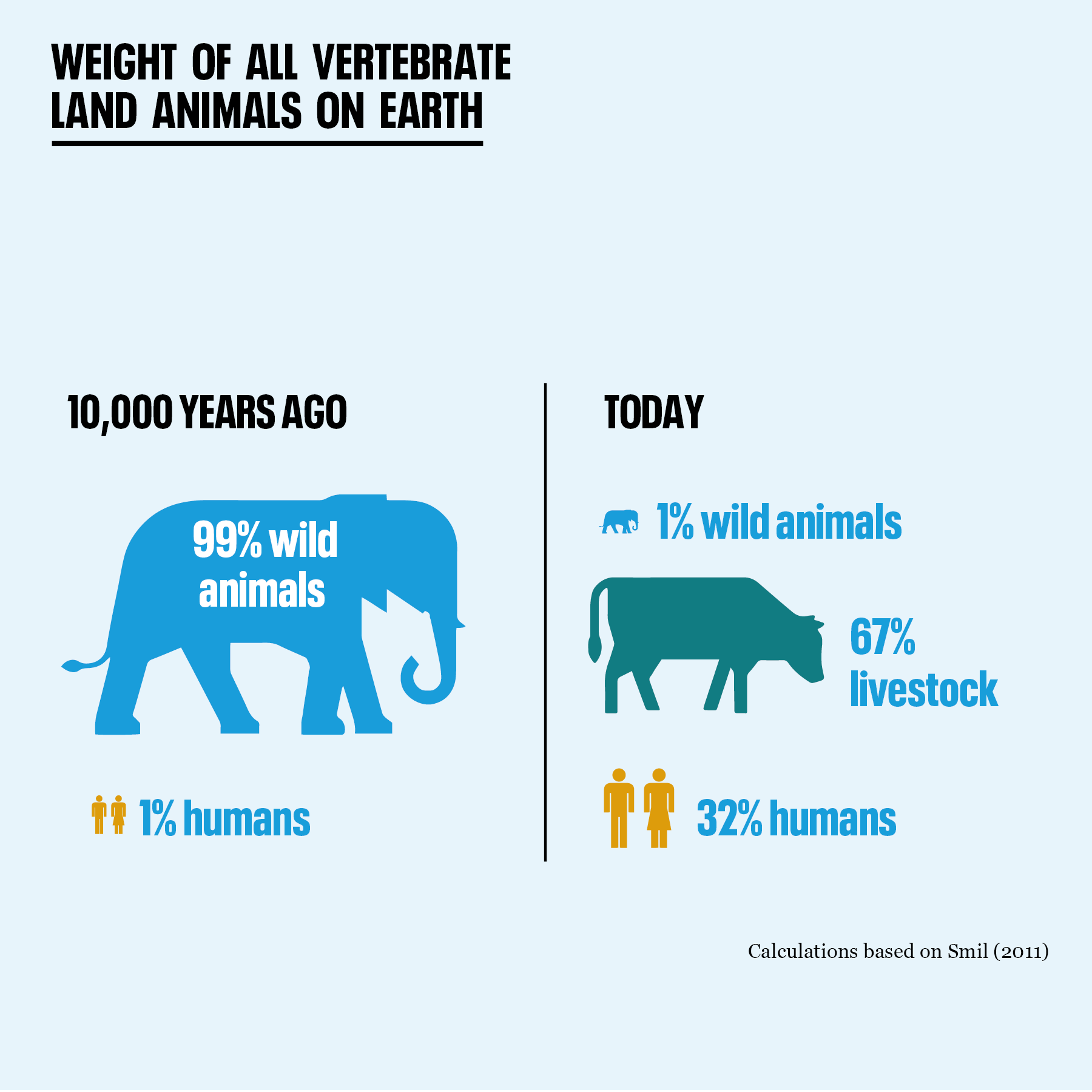
Fact Ten: Not everyone is as relaxed as the Roslings about population
A growing scientific consensus is emerging about human population impacts upon our planet:
- In November 2017, 15,000 scientists signed on to a “warning to humanity” which identified population as a “primary driver” of environmental destruction
- A 2017 survey of Nobel Laureates found that “population rise/environmental destruction” was the issue of greatest concern
Sir David Attenborough has spoken frequently about the issue. In an interview this March he said: “The natural world is steadily being impoverished. The situation is becoming more and more dreadful and still our population continues to increase. It’s about time that the human population of the world came to its senses and saw what we are doing – and did something about it.”
A paper published in Nature Ecology and this March identified population growth and high consumption as the “main drivers” of biodiversity loss
Meanwhile, leaders from the Global South have repeatedly expressed concerns about the impact of population growth on their economic developments:
- In November 2017, Dr Mohamed Ibn Chambas, the United Nations Special Representative to West Africa and the Sahel said:
In [the] case of Africa, so far…population grows faster than the economy, and countries cannot cope with the increasing demands for basic social services such as water, sanitation, education, and health.
- In 2018, Executive Director of the Ghanaian National Population Council, Dr. Leticia Appiah said the government must “incentivize small family size. You have to make small family size attractive and a norm.”
- In 2017, Malawi’s Minister of Finance, Economic Planning and Development, Goodall Gondwe, said: “The high population is exerting a lot of pressure on our economy. As a country we have made tremendous gains over the years but the impact is not reflected on our economy because the gains have been dissipated by population growth”
- Pakistani Prime Minister Prime Minister Khaqan Abbasi recently told a delegation from the country’s population council that population growth was the country’s “major challenge.”
The global crisis we face is too great to allow hope and theories to solve it. We hope these facts will help to increase the demand for action that will make a difference.
